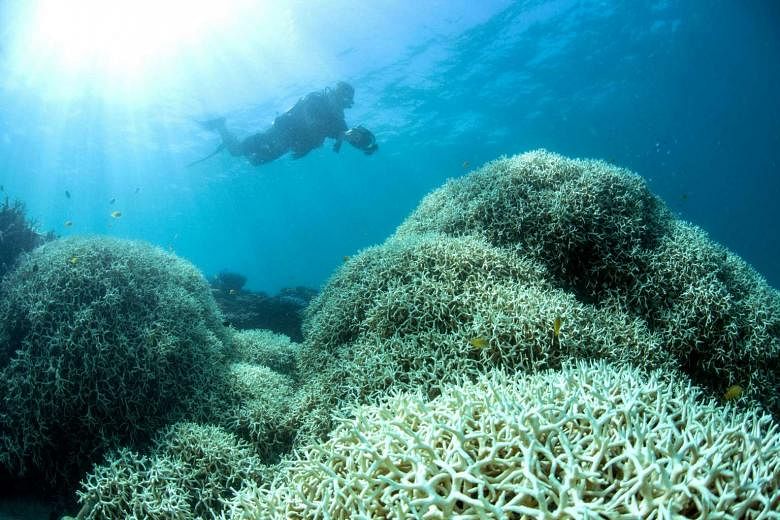Coral is a living marine invertebrate that can survive only within a narrow band of ocean temperature.
Many types of coral have a special symbiotic relationship with tiny marine algae (zooxanthellae) that live inside their tissue and are very efficient food producers, providing up to 90 per cent of the energy corals require to grow and reproduce.
When ocean surface temperatures reach as high as 33 deg C, heat stress results in the relationship between the coral host and zooxanthellae, which give corals much of their colour, breaking down.
Without the zooxanthellae, the tissue of the coral animal appears transparent and the bright white skeleton is revealed. Corals begin to starve once they bleach and may die unless conditions return to normal.
SOURCE: GREAT BARRIER REEF MARINE PARK AUTHORITY

